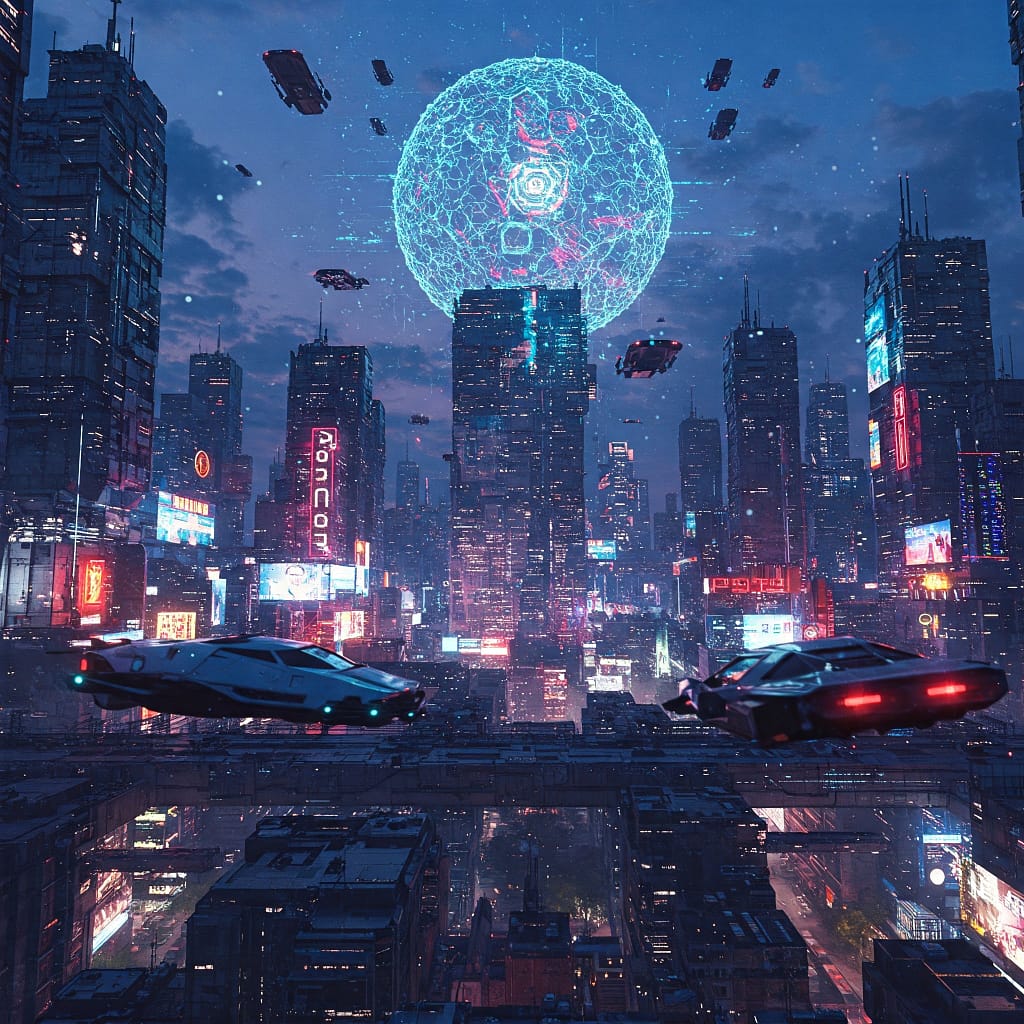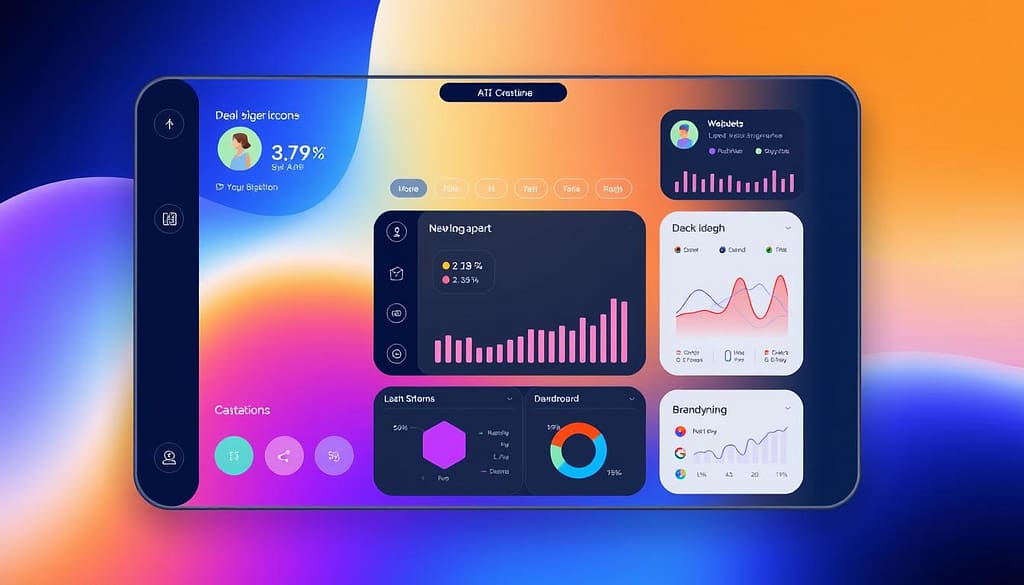Imagine having a personal ai agent to help you manage info and automate tasks. This would make your life easier and more efficient. With AI getting better fast, making a virtual assistant is now possible.
OpenAI’s “deep research” feature is a big deal, even though it’s only for ChatGPT Pro users now. It could change how we get to complex info. Soon, it will be available in more packages, like ChatGPT Plus and Team.
So, can you make a virtual assistant that learns and adapts to you? What tools and tech do you need to build such an ai agent?
Starting to make your own ai assistant is exciting. You’ll learn about tools, techniques, and best practices for making smart chatbots. AI can automate tasks like data analysis and info search.
This makes AI a must-have for both work and personal life. Your goal is to make a chatbot that gets and answers your questions. This will make your life simpler and more efficient.
Key Takeaways
- Building a personal ai agent needs a deep understanding of AI, machine learning, and natural language processing.
- OpenAI’s “deep research” feature could change how we get to complex info.
- Creating a virtual assistant can automate tasks and make life easier and more efficient.
- Essential tools and technologies are needed to build an ai agent, like AI reasoning models and natural language processing techniques.
- Continuous adjustments based on user feedback are key to improving your ai assistant’s quality and abilities.
- Using a no-code platform can speed up making personalized apps.
Understanding AI Agents and Their Capabilities
AI agents are software programs that use artificial intelligence. They do tasks that need human smarts, like understanding language and making choices. They get better with machine learning, learning from data and improving over time.
Some key things AI agents can do include:
- Learning from data and getting better over time
- Understanding and making language that sounds like humans
- Seeing and making sense of images and other data
- Deciding and acting based on the data they have
Using ai agent tech with other tools is getting more common. Many groups use AI agents to automate tasks and help customers. By 2025, they will get even better at tasks like understanding language.
As AI agents get smarter, we’ll see new uses for them. This includes machine learning-based chatbots and artificial intelligence-driven decision systems.
Essential Tools and Technologies for AI Development
Building AI needs many tools and technologies. This includes programming languages like Python and Java. Also, software development kits (SDKs) like TensorFlow and PyTorch are key. Knowing these tools is crucial for creating and using AI models.
Python is a favorite for AI work because it’s easy and flexible. TensorFlow is a top choice for making and training machine learning models.
In an ai tutorial, you can discover the main tools and technologies for AI. This includes programming languages and software development kits. OpenAI’s “deep research” feature uses its new o3 reasoning model. It helps with complex tasks in finance, science, policy, and engineering.
Some important tools and technologies for AI are:
- Programming languages such as Python and Java
- Software development kits (SDKs) such as TensorFlow and PyTorch
- Machine learning models and algorithms
- Cloud computing platforms such as AWS, Google Cloud, and Microsoft Azure
Using these tools can make AI development faster. Businesses can cut model development time by up to 80%. They can also see a 20-30% boost in efficiency.
Companies can also speed up AI app deployment by up to 75%. This is thanks to containerization technologies.
Preparing Your Development Environment
To start with ai development, you need to get your environment ready. This means setting up your system and installing key libraries and frameworks. You also need to make sure your environment is good for machine learning and natural language processing.
For example, you must install NLTK and spaCy for natural language processing. You can do this with the command `pip install crewai crewai-tools uv. Also, you’ll need a model like `cortecs/phi-4-FP8-Dynamic` for your ai development.
Here are some important steps to get your environment ready:
- Install necessary libraries and frameworks
- Provision a suitable model
- Manage dependencies, including `crewai[tools]>=0.100.1,=0.1.0`
By doing these steps, you’ll be ready to start your ai development, machine learning, and natural language processing projects.
Fundamentals of Natural Language Processing
Natural language processing is a part of AI that helps computers talk to humans in their own language. It’s key to making AI models that can understand and create human language. This means programming and software development to make algorithms that can handle and analyze human language.
Some big uses of natural language processing are language translation, feeling analysis, and text summary. These uses can change many fields like healthcare, finance, and customer service. For instance, it can help analyze patient data for better treatment or improve customer service by understanding feedback.
To get into natural language processing, you need to know the basics and how it works in real life. This means studying what experts do and looking at online resources and tutorials. By learning more about natural language processing, developers can make AI that talks to humans more naturally.
Some important skills for natural language processing are:
* Programming skills in languages like Python or Java
* Software development skills, including machine learning experience
* A deep understanding of natural language processing concepts
* The ability to work with big data and analyze it
Create Your Own AI Agent: A Step-by-Step Guide
To create your own ai agent, you must design a software program. It should do tasks that need human smarts. You’ll decide its purpose, how it works, and how users interact with it. AI tools help you build ai assistant for many tasks.
The steps to ai agent creation include designing, building, and deploying. Tools like OpenAI’s “deep research” feature can help. It’s first for ChatGPT Pro users, offering advanced research tools.
Here are the main steps to create your own ai agent:
- Determine the purpose and functionality of your AI agent
- Design the user interface and user experience
- Choose the right AI development tools and technologies
- Build and deploy your AI agent
By following these steps, you can build ai assistant for many tasks. This boosts your productivity. AI agents are getting more popular. With the right tools, you can create your own ai agent for your needs.
Selecting the Right Machine Learning Models
Machine learning is key for AI agents to learn and get better. An ai tutorial helps developers learn about different models. These include supervised, unsupervised, and reinforcement learning models.
Going the diy ai route gives developers more control. But picking the right model is crucial for the AI to do its job well.
When choosing a model, think about the data, task complexity, and accuracy needed. The right model helps AI agents learn and improve. This leads to better performance over time.

- Supervised learning models, which are suitable for tasks such as image classification and natural language processing
- Unsupervised learning models, which are useful for tasks such as clustering and dimensionality reduction
- Reinforcement learning models, which are ideal for tasks that involve decision-making and optimization
Understanding and choosing the right machine learning model is important. It helps developers make AI systems that learn and get better over time.
Training Your AI Assistant
Training your AI assistant is key to making it work well. You need to give it data and tweak its settings for better performance. The aim is to have an assistant that gets smarter over time, thanks to machine learning models.
Getting a big and varied dataset is important for training ai. This lets the assistant learn from many examples and get more accurate. For example, AI helped with the Beatles’ song “Now and Then,” showing AI’s creative power.
Here are some tips for training ai:
- Use top-notch and relevant data
- Adjust settings for the best results
- Keep checking and boosting the assistant’s skills
By sticking to these tips and using smart machine learning models, you can make an ai assistant that keeps getting better. It will help a lot in different tasks and areas.
Implementing Conversational Capabilities
Adding conversational skills to your AI agent is key for a smooth user experience. It means making interfaces that get and answer human talk. This uses methods like intent recognition and feeling analysis. A conversational ai model can team up with a chatbot for a more personal touch.
A virtual assistant can get better at knowing what users like over time. This happens by using learning algorithms and natural language tech. Some cool things a conversational ai can do include:
- Intent recognition: figuring out what the user really wants
- Sentiment analysis: seeing how the user feels and reacting right
- Contextual understanding: keeping track of what’s going on in a chat
With these skills, your AI agent can talk to people in a way that feels natural. This makes users happier and more likely to come back.
Building the User Interface
Building the user interface for your AI agent is key. Ui design makes it easy and friendly for users. It’s important to know how to design a good user interface.
For example, a simple design helps users understand things easily. This makes the AI work better with people.
The ai development user interface should change with new information. This is done by adding memory to the AI. This way, it remembers what happened before and makes things better for the user.
Some important things to think about when making the user interface are:
- Creating a simple and consistent design language
- Incorporating memory to maintain context across interactions
- Using modular nodes to fulfill specific roles in workflow creation
- Integrating external tools for real-time updates and dynamic data management
By focusing on these, you can make a user interface that is easy to use and works well. Using ui design and user interface best practices is crucial. It helps your AI agent work well with humans, which is vital in ai development.

Security Measures and Privacy Considerations
Building an AI agent means we must think about ai security and privacy considerations. We need to protect user data and stop unauthorized access. It’s key to know the best ways to keep AI safe and trustworthy.
Encrypting data and using secure login methods are crucial. Also, machine learning models must be made with safety in mind. OpenAI’s “deep research” feature is first for ChatGPT Pro users. They plan to let more people use it, showing how important safe AI access is.
Some important steps for security are:
- Implementing encryption for data protection
- Using secure authentication protocols
- Designing machine learning models with security in mind
By focusing on ai security and privacy considerations, we can make AI agents that work well and are safe. This makes the user experience better and keeps important info safe.
Testing and Quality Assurance
Testing and quality assurance are key in ai development. They make sure AI agents work well and accurately. The Beatles’ song “Now and Then” shows AI’s power in creative fields. It’s vital to know about testing and quality assurance for your AI.
Testing involves using tools and manual checks to ensure AI quality. This includes:
- Automated testing tools to find bugs
- Manual testing to check AI performance
- CI/CD pipelines for smooth deployment
Quality assurance means checking AI model performance and improving it. This includes looking at metrics like accuracy and recall. By focusing on testing and quality assurance, developers make AI agents reliable and effective.
Deployment and Hosting Options
When choosing deployment and hosting for your AI agent, think about a few things. You want your AI to be easy to use and accessible. The right hosting and deployment are key to this.
Cloud services like AWS or Google Cloud are great for hosting AI models. They offer the needed infrastructure.
Important things to consider include:
- Scalability: The ability to scale up or down to meet changing demands.
- Security: Ensuring the security and integrity of the AI agent and its data.
- Cost: Balancing the costs of deployment and hosting with the benefits of the AI agent.
In ai development, how you deploy and host is crucial. The right plan makes AI agents efficient, secure, and affordable. As AI grows, we’ll see new hosting options like edge computing or hybrid clouds.

Monitoring and Maintenance Strategies
Effective monitoring and maintenance are key for AI agents’ long-term success. As AI grows, it’s vital to have strategies for keeping AI agents reliable and accurate. This means using tools to watch AI model performance and find ways to get better.
In AI development, monitoring and maintenance mean watching AI models and making changes when needed. This includes updating models, tweaking settings, and making sure AI agents follow rules. By focusing on monitoring and maintenance, developers can make AI agents that are not just good but also safe and open.
- Implementing logging and analytics tools to track AI model performance
- Regularly updating AI models with new data and fine-tuning parameters
- Establishing guidelines and protocols for AI agent operation
By using these strategies, developers can make sure their AI agents work their best. They will give accurate and reliable results, helping AI grow and improve.
Scaling Your AI Assistant
As you work on your AI assistant, scaling is key. It means making your AI handle more users and tasks. This is important for AI to do things that humans do at a big scale. To do this, you need to know how to scale AI well. This includes using distributed computing and parallel processing.
Companies like OpenAI are finding ways to grow their AI models. They have features like “deep research” for personal research help. By using machine learning and ai development, you can make AI that gets better with time. For example, tools like Roo Code and Cursor help developers write code faster.
Some important things to think about when scaling your AI assistant include:
- Using distributed computing and parallel processing to grow capacity
- Applying machine learning to boost performance and accuracy
- Connecting with other services to add more features
- Making sure data is safe and private
By following these tips and using the latest in ai development and machine learning, you can make a powerful AI assistant. It can handle tough tasks and give users useful insights. As you grow your AI, you’ll open up new ways to use it. This could be anything from automating tasks to giving personalized advice.
Integration with External Services
Connecting your AI assistant to other systems is key to making it better. This lets your AI talk to other services smoothly. APIs and data exchange protocols help share info between systems.
AI agents can work with services like Airtable for better data management. This lets AI agents update records fast and make smart choices. It makes them more useful and quick.
Integrating AI agents with services brings many benefits. Here are a few:
- More features and abilities
- Work faster and more efficiently
- Grow and change easily
As AI gets better, we’ll see new ways to use it. For example, AI in customer support and project management will make things better. AI agents can solve big problems, showing how flexible and smart they are.
Unleashing the Future of Personal AI Assistance
Artificial intelligence (AI) is getting better and better. This means our personal AI helpers will change how we live and work. They will do routine tasks, help us more, and meet our personal needs.
Agentic AI is very exciting for keeping things safe. It can find and fix problems fast. This makes our digital world safer and more efficient.
New tech like heterophilic hypergraph learning will make AI even better. Soon, AI will see threats, act fast, and fix problems on its own. This will change how we keep apps safe.
But, we must think about the ethics of AI. We need to keep our data safe and understand how AI works. We must trust AI to use it wisely.










